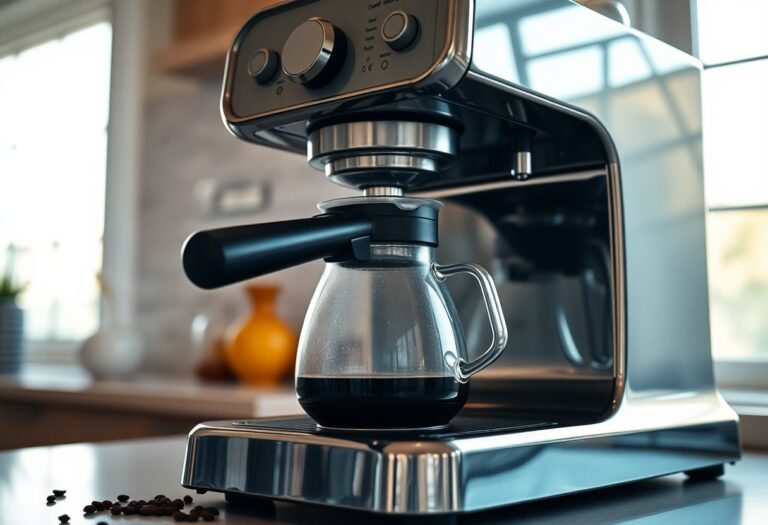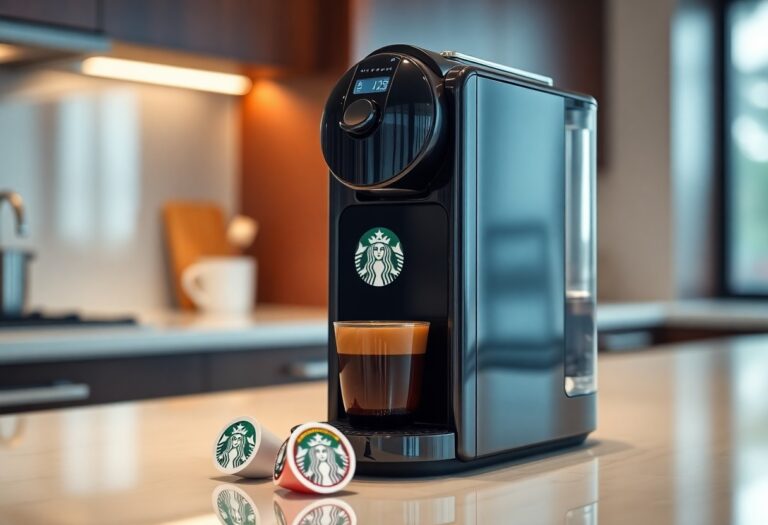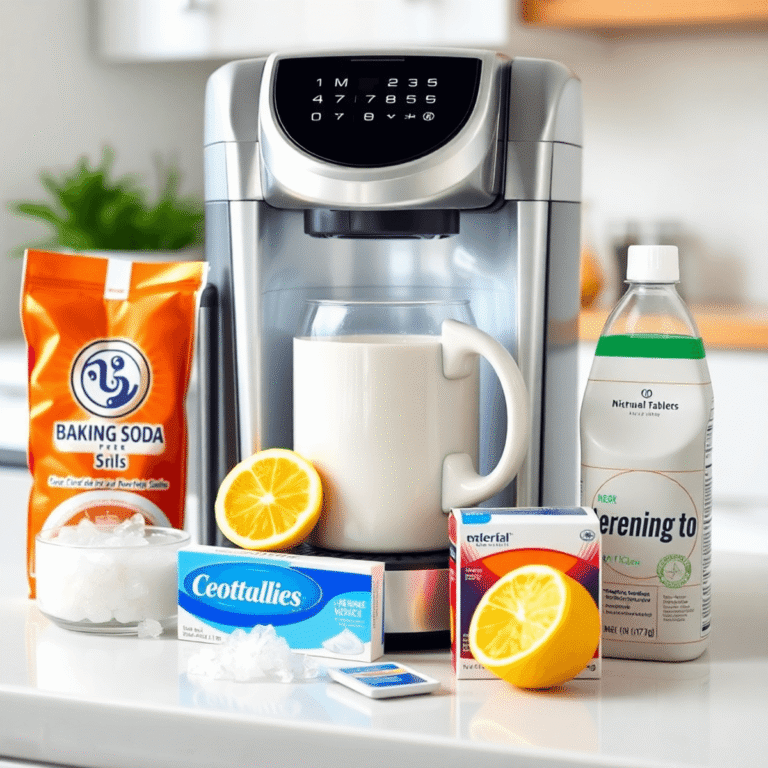Which Coffee is Best for Coffee Machine – Bean Optimization
Most coffee enthusiasts find themselves overwhelmed when choosing the right beans for their coffee machine. The quality of your coffee beans plays a significant role in determining the taste and aroma of your brew. To optimize your experience, you need to consider factors like freshness, grind size, and origin. This guide will help you navigate the options, ensuring you select the best coffee that suits your machine and enhances your daily ritual of enjoying a perfect cup of joe.
Key Takeaways:
- Freshness is vital; opt for recently roasted beans to enhance flavor and aroma.
- Choose the grind size according to your coffee machine type – coarser for French press and finer for espresso.
- Consider the coffee bean origin; different regions provide distinct flavor profiles that can impact your brew.
- Experiment with various roast levels; light, medium, and dark roasts each offer unique taste experiences.
- Maintain your coffee machine regularly for optimal performance and consistent brew quality.

The Role of Bean Freshness in Brew Quality
Bean freshness directly influences the flavor profile and aroma of your coffee, enhancing the overall brewing experience. Using freshly roasted beans means you’ll benefit from a fuller range of flavors, including vibrant acidity, rich sweetness, and a well-rounded body. Stale beans, on the other hand, can lead to dull and flat brews, which do not resonate with the complexities intended by the roaster. Prioritizing fresh beans ensures that each cup you brew is not only enjoyable but also showcases the true essence of the coffee origins.
Understanding the Impact of Roast Dates
Roast dates are a vital indicator of freshness, with the best flavor typically found within a few weeks post-roast. Most specialty coffee is best enjoyed between 5 to 14 days after roasting, as this window allows for the optimal release of flavors and aromas. Beans aged beyond this period lose necessary oils, leading to diminished taste and character. Seek out coffee roasters who clearly label roast dates to ensure optimal quality in your cup.
Choosing the Right Storage for Optimal Freshness
Proper storage plays a significant role in maintaining the freshness of your coffee beans. Placing the beans in a cool, dark, and dry environment helps preserve their quality over time. Utilize airtight containers made of materials such as glass or ceramic to minimize exposure to air, light, and moisture. Avoid keeping your beans in the fridge or freezer, as temperature fluctuations can condensation, which accelerates staling. Ultimately, an ideal storage solution can extend the magic of freshly roasted beans well beyond the roast date.
Airtight containers not only prevent oxidation but also protect your coffee from light and humidity, both of which can quickly degrade the flavor. Consider opaque containers that keep out sunlight and look for options equipped with CO2 valves if your beans are whole. These valves allow gases released during degassing to escape while keeping out oxygen, enabling you to store beans for several weeks without sacrificing their quality. Ensure you label the container with the roast date to keep track of freshness and enjoy your coffee at its prime.
Grind Size: The Key to Perfect Extraction
Achieving the ideal coffee brew relies heavily on the grind size of your beans. An optimal grind allows for perfect extraction, facilitating an even balance of flavors during brewing. From espresso to French press, each method demands a specific grind size to unlock the unique qualities of the coffee. Experimenting with different grind sizes can lead to groundbreaking improvements in your daily cup, ensuring you consistently enjoy the best flavors every time you brew.
Balancing Coarseness and Fineness
Striking the right balance between coarseness and fineness in grind size is necessary for the extraction process. Fine grinds release flavors rapidly, ideal for quick brewing methods like espresso, while coarse grinds work better for prolonged extraction methods like cold brew or French press. Adjusting the grind to suit your brewing method will profoundly affect the balance of the coffee’s body and acidity, ultimately elevating your cup.
The Influence of Grind Size on Flavor Profile
Grind size significantly impacts the flavor profile of your coffee; it alters the extraction rates of various compounds within the beans. A finer grind exposes more surface area to water, leading to a quicker extraction of flavors, often resulting in a bolder, bitter profile. Conversely, a coarser grind extracts flavors more slowly, allowing for a smoother, more balanced cup with pronounced sweetness and subtle notes. Properly adjusting the grind size depending on your brewing method can dramatically enhance or diminish specific flavor characteristics, allowing you to customize your coffee experience.
In practice, the influence of grind size on flavor profile means that a single coffee bean can taste dramatically different depending on how it’s ground. For instance, if you brew a medium roast coffee too finely for a drip brew, you might find it overpowering and bitter due to *over-extraction*. Meanwhile, a coarser grind may lead to *under-extraction*, resulting in a weak, sour taste. Testing different grind sizes will help you discover the sweet spot, revealing the coffee’s hidden layers of complexity and richness.
Varietals and Their Unique Brewing Properties
Diving into the world of coffee varietals reveals a rich tapestry of flavors and brewing characteristics. Each variety brings distinct notes and intensities to your cup, influenced by genetic factors and cultivation practices. For a deeper understanding of this fascinating topic, explore discussions about the ideal beans for your coffee machines on What type of coffee beans do you recommend using or …
Exploring Arabica vs. Robusta Beans
Arabica and Robusta beans represent the two main coffee species, each possessing unique traits. Arabica is known for its smooth, mild flavor with a natural sweetness and higher acidity, making it ideal for a more refined espresso. In contrast, Robusta beans deliver a stronger, bolder taste with higher caffeine content and are often used in blends to enhance crema and body.
Regional Influences on Bean Characteristics
Your coffee experience is significantly shaped by the region where beans are grown. Factors such as climate, soil quality, and altitude play pivotal roles in developing the flavor profile and aroma of the coffee. For instance, beans from Central and South America typically showcase bright acidity and nutty overtones, while those from Africa often have vibrant fruit and floral notes. Understanding these regional nuances empowers you to make informed choices when selecting beans for your brewing process.
The Science of Brewing Temperature and Bean Compatibility
Brewing temperature is a key factor in coffee extraction, impacting the flavors and aromas that your beans can offer. Each type of coffee bean has its own optimal temperature range, which can enhance or detract from your overall coffee experience. Understanding these temperature requirements will help you choose the right beans and brewing settings to achieve the best flavor profile in your cup.
Ideal Brewing Temperatures for Various Beans
| Type of Bean | Ideal Brewing Temperature (°F) |
|---|---|
| Arabica | 195 – 205 |
| Robusta | 200 – 210 |
| Single Origin | 190 – 205 |
| Espresso | 190 – 205 |
How Temperature Affects Flavor Extraction
Temperature significantly influences flavor extraction during brewing. Lower temperatures might lead to under-extraction, resulting in weak or sour notes, whereas higher temperatures increase the risk of over-extraction, which can produce bitter and harsh flavors. To strike the perfect balance, experiment with different temperatures while paying close attention to the resulting flavors to find what works best for your chosen beans.
More on How Temperature Affects Flavor Extraction
| Temperature Range (°F) | Flavor Impact |
|---|---|
| 180 – 190 | Weak, sour flavors; under-extraction |
| 190 – 200 | Balanced extraction; optimal flavors |
| 200 – 210 | Strong, rich flavors; risk of bitterness |
For optimal brewing, it’s necessary to manage temperature carefully. For instance, if you brew Arabica beans at 210°F, the result may be overly bitter, masking the nuanced fruity notes. Leveraging the right temperature and aligning it with your bean choice will considerably enhance the overall taste experience. To perfect your cup, consider both the bean variety and the precision of your brewing temperature to unlock the full potential of your coffee.

Customizing Your Coffee Machine for Bean Optimization
Fine-tuning your coffee machine enhances Every Cup experience, making it vital to understand how to optimize for different bean types. Customization allows you to extract the full flavor and aroma from your beans, ensuring that each brew is a delightful experience. Check your machine’s settings regularly to match your preferred roast level and varietal, aiming for a harmonious balance between grind size, brewing time, and water temperature.
Adjusting Settings for Different Bean Types
Depending on the bean type, adjusting your coffee machine settings can tremendously impact flavor. For example, light roasts require a finer grind and a longer brew time, ensuring the nuanced flavors shine through. In contrast, dark roasts benefit from a coarser grind and shorter brewing time, allowing for robust flavors without excessive bitterness. Tailoring these settings lets you fully appreciate each coffee’s character and essence.
- Optimize with finer grind for light roasts.
- Coarser grind promotes better flavor in dark roasts.
- Experiment with temperature to enhance extraction.
- Shorter brew time suits medium roasts.
- Knowing the specific needs of your beans is crucial.
| Bean Type | Recommended Settings |
| Light Roast | Finer grind, longer brew time |
| Medium Roast | Medium grind, balanced brew time |
| Dark Roast | Coarser grind, shorter brew time |
| Espresso Beans | Very fine grind, minimal brew time |
| Decaf Beans | Medium grind, adjusted brew time |
Maintenance Tips for Sustained Performance
Routine maintenance plays a significant role in ensuring optimal performance of your coffee machine. Clean components regularly to remove coffee residue and oils that can alter flavor. Descaling your machine every three to six months prolongs its lifespan, while ensuring the internal heating elements function efficiently. A well-maintained machine delivers consistent brews, highlighting the best characteristics of your beans.
- Regularly clean brew group and filter.
- Descale every 3-6 months for optimal performance.
- Inspect hoses and connections for leaks.
- Test water quality to avoid buildup in system.
- Knowing your machine’s maintenance schedule fosters longevity.
Incorporating a strict maintenance routine extends the life of your coffee machine and enhances the quality of your brews. Make it a priority to clean the brew group and filters weekly, ensuring no oils disrupt the coffee’s natural flavors. Descaling works wonders by removing mineral deposits on the heating elements that can compromise brewing temperature. Adapt to the water quality you use, as hard water can lead to premature scaling. Consistency in your maintenance practice supports the best extraction and flavor from your chosen beans.
- Cleansing removes oils that affect taste.
- Regular descaling prevents buildup in machinery.
- Evaluate your water’s hardness for quality control.
- Schedule consistent checks on all system components.
- Knowing how maintenance impacts flavor elevates your experience.
To wrap up
So, when selecting coffee for your coffee machine, focus on your taste preferences and the grind size needed for optimal extraction. Freshly roasted beans, paired with the right grind consistency, will elevate the flavor of your brew. Pay attention to the origin and roast profile to match your desired strength and notes. By investing time in choosing the right beans and ensuring quality preparation, you’ll enjoy a satisfying coffee experience tailored to your liking.
FAQ
Q: What types of coffee beans are best for coffee machines?
A: The best types of coffee beans for coffee machines are single-origin arabica beans, which offer a wide variety of flavors. Espresso blends, often made from a mixture of arabica and robusta beans, are also popular for coffee machines. Look for medium to dark roast beans, as they tend to produce a richer flavor in espresso and drip machines.
Q: How should I grind coffee beans for optimal flavor extraction in a coffee machine?
A: The grind size depends on the type of coffee machine you are using. For espresso machines, use a fine grind; for drip coffee makers, a medium grind is ideal; and for French press, a coarse grind works best. The right grind size ensures that water passes through the coffee grounds properly, extracting the best flavors without over-extraction or bitterness.
Q: Does the freshness of coffee beans affect the brew quality in coffee machines?
A: Yes, the freshness of coffee beans plays a significant role in brew quality. Freshly roasted beans typically have better flavor and aroma than older, stale beans. It’s best to use beans within 2-4 weeks of roasting for maximum flavor and to store them in an airtight container away from light, heat, and moisture to maintain their freshness.
Q: How does water quality impact the coffee brewing process in machines?
A: Water quality is imperative for making great coffee. Ideally, you should use filtered water that is free from chlorine and other impurities. The mineral content in water also affects flavor; water that is too soft or hard can lead to subpar extraction. Aim for a balanced mineral content to enhance the overall taste of your coffee.
Q: Is it necessary to clean my coffee machine regularly, and how does this affect coffee taste?
A: Yes, regular cleaning of your coffee machine is important for maintaining optimal taste. Residue from coffee oils, minerals from water, and other particles can accumulate over time, leading to off-flavors in your brew. Clean your machine according to the manufacturer’s instructions, typically once a month, to ensure that you always have the best-tasting coffee.







